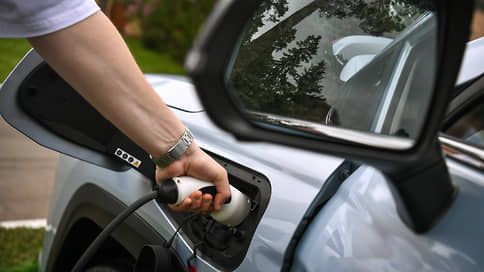The Ministry of Energy has been instructed to reduce “down to zero” the cost of connecting charging stations for electric vehicles to power grids
[ad_1]

As Kommersant found out, the government instructed the Ministry of Energy to reduce “down to zero” the cost of connecting charging stations for electric vehicles to power grids. However, station operators will still be required to pay for this service through a higher transmission tariff. Station owners criticize the proposals because they are operating on the brink of profitability amid low loads. Analysts warn that such changes will provoke a wave of requests for benefits from other categories of consumers.
The government instructed the Ministry of Energy to develop new options on how to reduce the costs of electric charging stations (ECS) for technological connection (TP) to networks down to zero (“Kommersant has seen the document”). The EPS operator will still be required to gradually compensate the network company for connection costs in the future, it follows from the document. Thus, the government instructed to consider the option of paying for TP by increasing the cost of electricity or by renting the station installation site. The third option is to conclude a take-or-pay agreement with the grid company, which provides for payment for electricity transmission services not based on consumption, but based on the maximum power of the electric power station. The Ministry of Energy told Kommersant that work is underway and proposals will be submitted to the government within the established time frame.
In 2022, 1.19 thousand “fast” and 6.37 thousand “slow” EPSs were installed in Russia. By 2026, it is planned to increase the number of “fast” stations to 9.7 thousand, and “slow” ones to 21 thousand. From the summer of 2022, EPS operators under the support program can receive a subsidy from the budget for connecting fast EPS with a capacity of 149 kW or more to the power grids . The volume of the subsidy covers only 30% of the payment for TP and no more than 900 thousand rubles.
Now, given the still small market for electric vehicles, the take-or-pay scheme looks unviable, since it is impossible to predict the level of loading of electric filling stations, says Green Drive CEO Sergei Yakovlev. For example, at the end of August, the load level of the Green Drive electric filling station on the M-4 Don highway was 12–16%, and during the off-season the figure will be lower. The proposal to pay for TP through an increase in the cost of electricity will lead to a noticeable decrease in the profitability of the charging infrastructure market, says Sergei Yakovlev. An increased rental rate for a place under an electric gas station will also lead to losses, he believes.
Now the cost of connecting an object with a power of up to 150 kW for the preferential category (the third category of reliability at low voltage) on average in the Russian Federation is 43 thousand rubles, in the European part of the country – 46.4 thousand rubles, calculated Artem Koval from the Institute of Economics and regulation of infrastructure sectors of the National Research University Higher School of Economics. For non-preferential consumers, connection, if it is necessary to build power lines and substations, can cost 1.1–4.7 million rubles. From July 2024, for all consumers of more than 150 kW, the cost of modernization and expansion of existing networks may be included in the payment for TP, which will lead to an increase in cost by 3–3.5 times, the expert notes.
Artem Koval reminds that now it is possible to connect an object of up to 150 kW to the network in installments with payment of interest in the amount of the key rate of the Central Bank of the Russian Federation plus 4% on the balance of the debt. The idea of compensating for the preferential cost of connecting EPS by increasing the price of a kilowatt-hour will require changes in legislation and will violate the long-standing principle of uniform tariffs for all consumers in the region, the expert warns. Such an amendment “will activate all kinds of lobbyists, and the tariff menu may spread both in the direction of increasing tariffs and in the direction of decreasing them for various groups of consumers,” the expert believes. Compensation for the cost of TP through rental payments is difficult to implement and justify legally, and a take-or-pay agreement, taking into account the relatively low load of EPS, will be unprofitable for the operator.
“Investors are interested in initiatives that reduce the cost of services and accelerate the return on investment. This also applies to take-or-pay contracts,” says Advisor to the President of Sitronics Group Armen Safaryan. According to him, now all the risks of implementing an infrastructure project lie with the investor, who himself assesses the limits on TP costs. It is important that the structure of the contract is clear to investors, continues Armen Safaryan, “ideally, you need to have a solution in which the authorized agency will say where there is free capacity and how much the TP will cost.” Such a system, in his opinion, will allow investors to determine installation locations based on an understanding of the relationship between costs and expected profits, so as not to shift commercial risks to the state or network company.
[ad_2]
Source link





